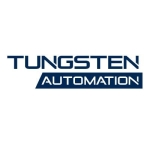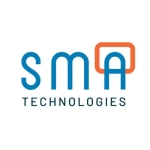What is our primary use case?
We use the solution for robotic process automation. We use it across the value chain for our business. We've used it in accounts, including cash management, and in HR for management tasks and IT for password resetting.
How has it helped my organization?
The automation has been quite useful. It's been helpful in our journey towards transformation.
What is most valuable?
I've used this solution for a while and I utilize the whole tool and get a lot of benefits out of it.
It helps save time. We've had efforts that would take more than four hours a day, yet, when done through UiPath, it takes less than a minute.
The useability is very good - even for non-technical people. I'm an accountant by education and now I'm also an automation expert by profession. Its interface is user-friendly to those of us who are non-technical.
Anyone who wants to automate any task that is rule-based and repetitive can do it through UiPath.
We can use the solution for automation emails or notifications.
It enables end-to-end automation. We developed a use case where people from different business units have large amounts of data, Excel files, we've made it so that we can combine it and enter it into the ERP system. Everything can be checked via the rule book and can create the report and send back the information to the customer. It simplifies the data and organizes and compiles it for them. Users have gotten the benefit of five FTEs by using UiPath. It saved many man-hours.
I haven't used the UiPath Community too much. I often Google questions to find answers. It is a good place to go for development work, though.
It reduces our footprint. We historically did have many items on-prem. I like it on-prem and on the desktop.
It can reduce the cost of digital transformation. Where processes can have faster response times, UiPath helps with efficiency. However, if the response time of the application is slow, and we need to provide workarounds, it isn't helpful in that it hasn't efficiently helped us save time.
UiPath reduces human error by 100%. Whatever you give to the robot, it will do it correctly. That said, it needs to be programmed correctly - if it's programmed wrong, it will do it 100% wrong. If it's programmed right, it does it 100% right.
It's freed up human time. It's not well-utilized in that sense. It should be available to everyone so that they can find ways to save time by creating their own automation according to what they need.
What needs improvement?
There are a few shortcomings. For example, even in their latest version, there are still older features even though they've introduced new ones in parallel. They should do something where they update the solution and then close off the older version after a year or something like that. That might help with standardization.
Sometimes it is very useful for automation. However, sometimes it is really, really frustrating when it is unable to manage the more dynamic items. When an element is stable, it's great. When it comes to changes to IDs or the dynamics of the website, it lets us down in front of our customers. It needs to be better at handling volumes of data.
Automation on the cloud has had issues. It can be slower.
The Academy classes could be improved. There should be a portal for use cases. There should be more business examples.
They should offer different licensing tiers, especially for daily individual users.
For how long have I used the solution?
I've been using the solution since 2016, more than five years.
What do I think about the stability of the solution?
It is a stable product. There were some issues while interacting with different applications. For example, with Microsoft, we have issues with One Drive. When UiPath is working on a file, it cannot quickly get to the file. We need to move the file to a local drive before processing the data. Microsoft applications seem to give it trouble.
What do I think about the scalability of the solution?
We have multinational business units. Company-wide, maybe 500 people are using it. Where I am, there may be a team of ten people working with it and 50 to 60 automations. The solution is in multiple locations and departments.
The solution is scalable. It depends on how an organization wants to utilize it.
How are customer service and support?
Technical support is very flexible, however, they do not respond quickly. Sometimes they just tell us "this is how it works" and we have to try to explain our framework.
How would you rate customer service and support?
Which solution did I use previously and why did I switch?
I have also tried Blue Prism. I didn't work with it much; I just studied it theoretically.
I also tried to work with Power Automate. Initially, it wasn't very good, however, later, it began to echo the style and functionality of UiPath.
UiPath is easy to use and easy to get started with.
How was the initial setup?
The deployment was a long journey. I was one of the first people in Pakistan to use it. Now, once you get a license, you can deploy it in two weeks. However, it depends on the complexity of the processes in terms of deploying automation.
We have around ten people maintaining the solution. It requires a lot of maintenance. If anything needs to be changed in the target application, it needs to be incorporated into the robot.
What was our ROI?
Someone told us you do need three to five years before you get an ROI. However, in our first year, we were able to save more than 8,000 hours.
What's my experience with pricing, setup cost, and licensing?
The solution is on the expensive side.
There should be standardized packages. If an organization already has a license with UiPath, UiPath should offer special licenses to each employee so that each employee has their own UiPath automation capabilities for each of their individual tasks.
There should be regional packages and costs. Different regions cannot necessarily afford UiPath. What is affordable in Europe may not be affordable somewhere else.
What other advice do I have?
We're a UiPath customer. We serve internal customers with robots.
We do not use the UiPath AI functionality, however, we are on a journey towards building our own internal solution.
I'd like to see UiPath cut the cost of their license. For end-to-end automation, for developers, I understand why it needs to be expensive, however, for day-to-day users, it should be cheap.
I'd recommend the solution to new users.
I'd rate the solution eight out of ten. It's still the best out of all related products.
Which deployment model are you using for this solution?
Public Cloud
Disclosure: PeerSpot contacted the reviewer to collect the review and to validate authenticity. The reviewer was referred by the vendor, but the review is not subject to editing or approval by the vendor. The reviewer's company has a business relationship with this vendor other than being a customer: partner





















